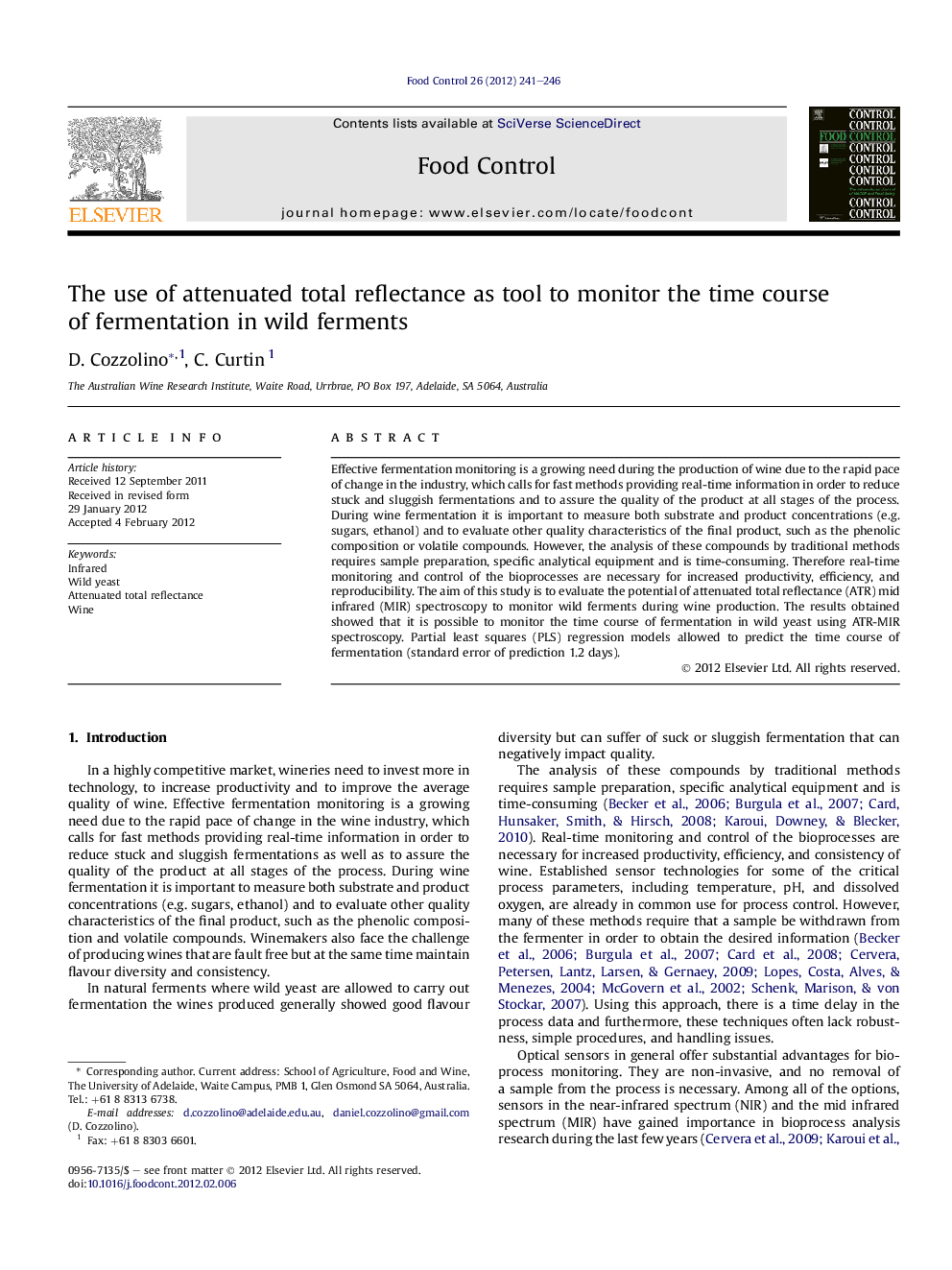| Article ID | Journal | Published Year | Pages | File Type |
|---|---|---|---|---|
| 6393835 | Food Control | 2012 | 6 Pages |
Effective fermentation monitoring is a growing need during the production of wine due to the rapid pace of change in the industry, which calls for fast methods providing real-time information in order to reduce stuck and sluggish fermentations and to assure the quality of the product at all stages of the process. During wine fermentation it is important to measure both substrate and product concentrations (e.g. sugars, ethanol) and to evaluate other quality characteristics of the final product, such as the phenolic composition or volatile compounds. However, the analysis of these compounds by traditional methods requires sample preparation, specific analytical equipment and is time-consuming. Therefore real-time monitoring and control of the bioprocesses are necessary for increased productivity, efficiency, and reproducibility. The aim of this study is to evaluate the potential of attenuated total reflectance (ATR) mid infrared (MIR) spectroscopy to monitor wild ferments during wine production. The results obtained showed that it is possible to monitor the time course of fermentation in wild yeast using ATR-MIR spectroscopy. Partial least squares (PLS) regression models allowed to predict the time course of fermentation (standard error of prediction 1.2 days).
⺠Stuck fermentation is an important issue both economical and technological for the wine industry worldwide. ⺠The use of infrared (IR) and multivariate data analysis was explored to monitor the fermentation of wild yeasts. ⺠IR spectroscopy can be used as a rapid method to monitor changes during the time course of the fermentation.
